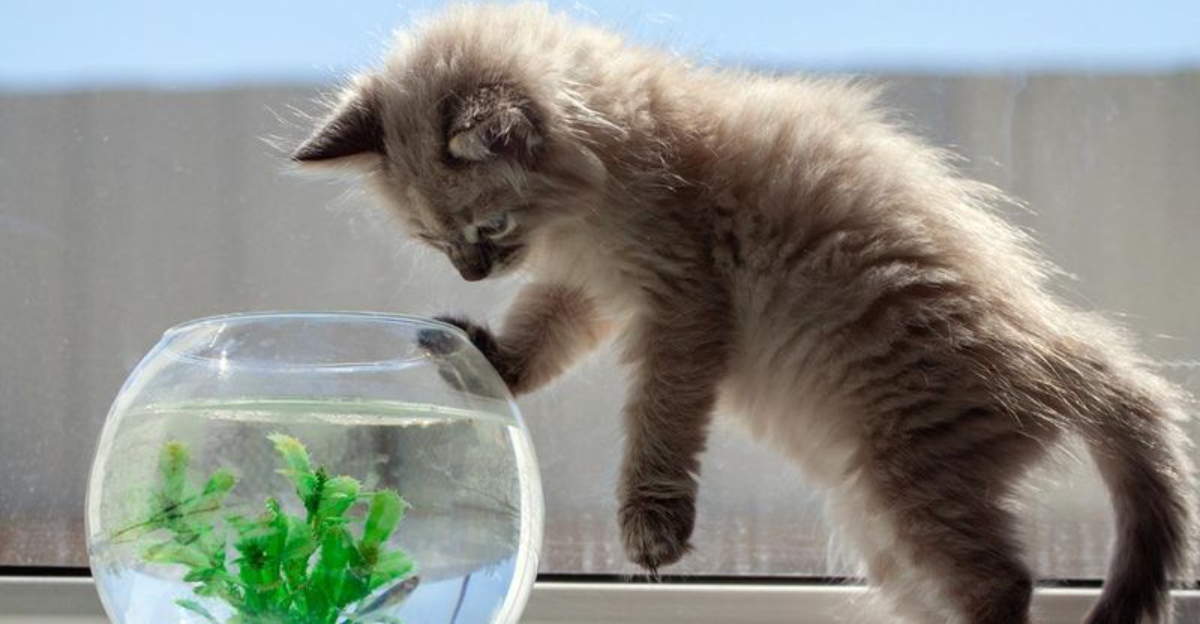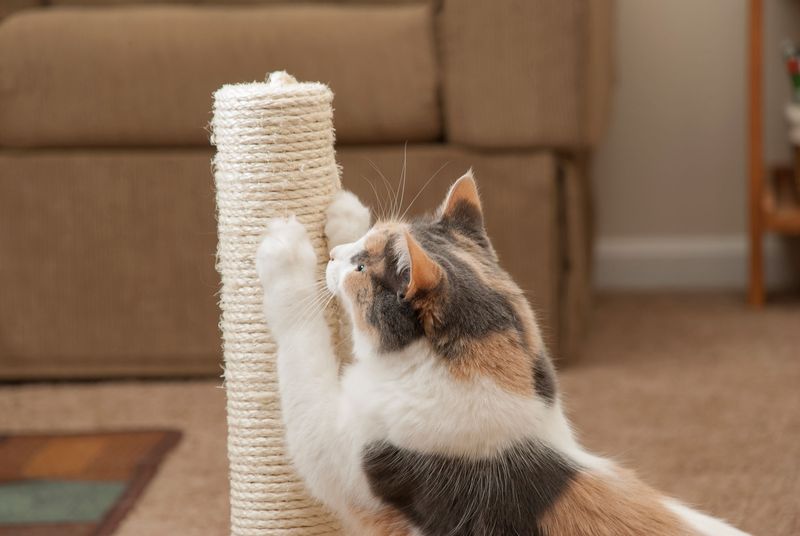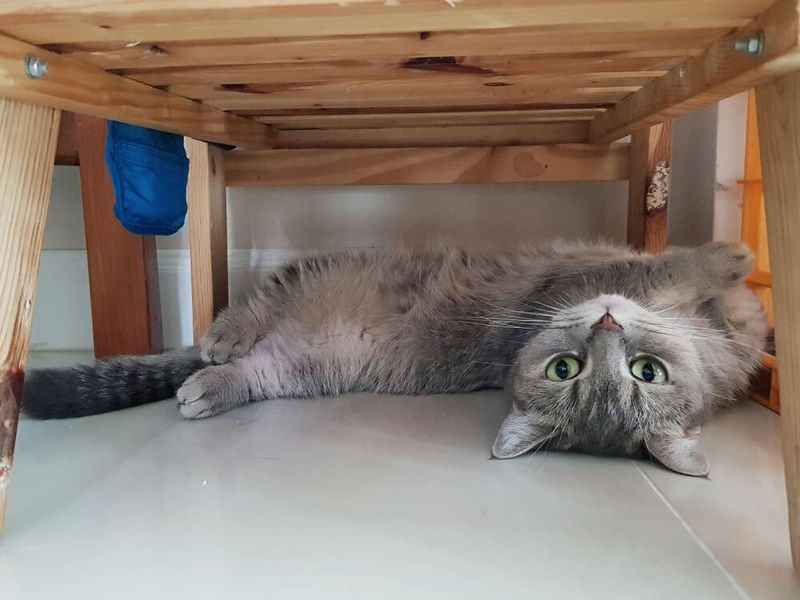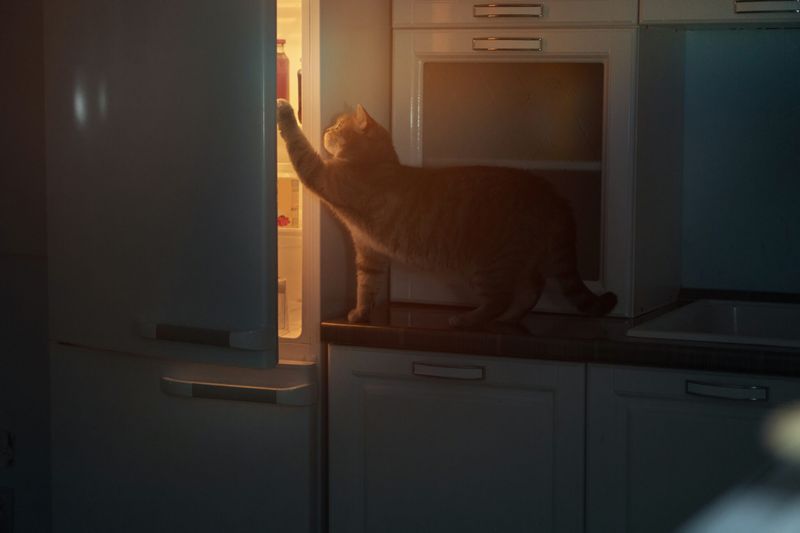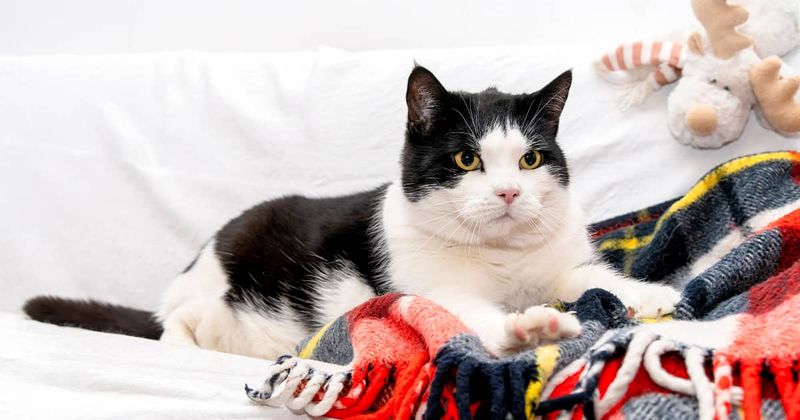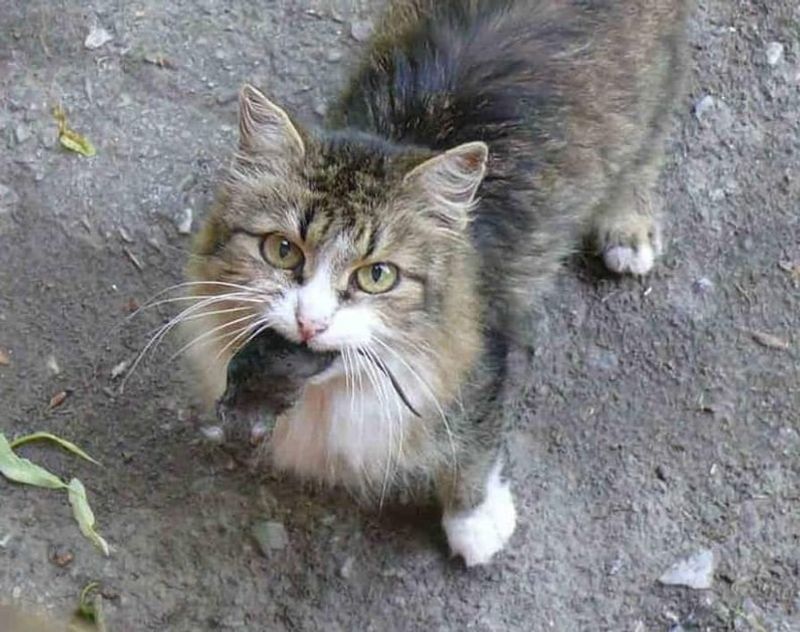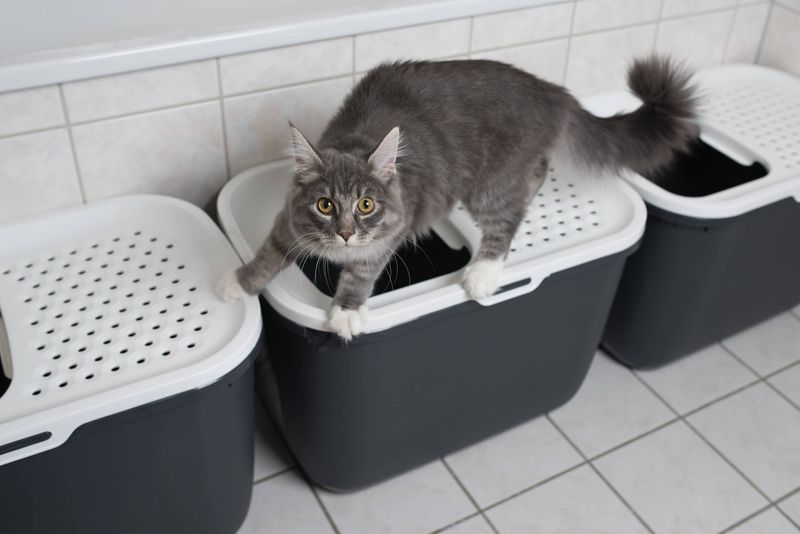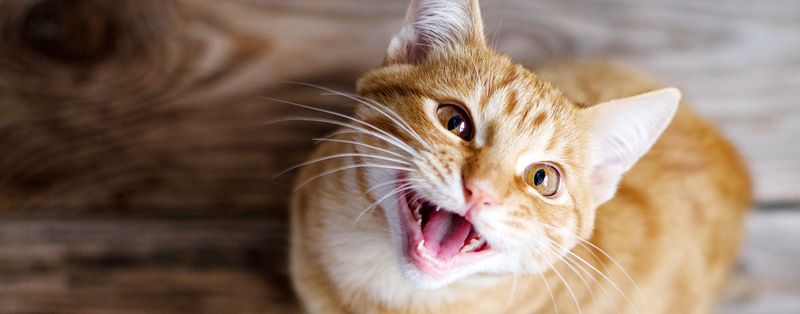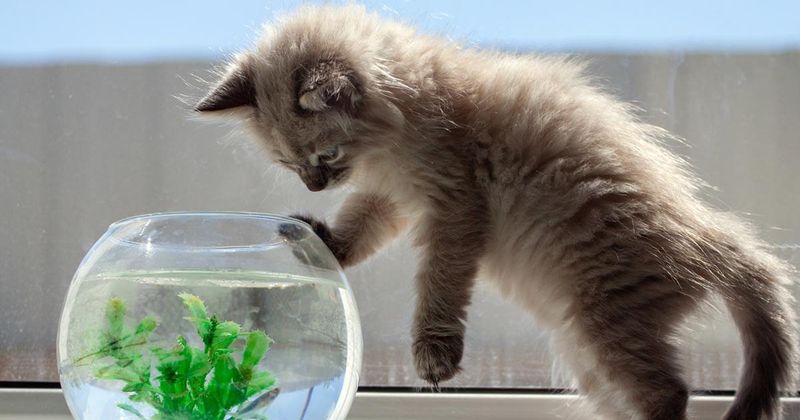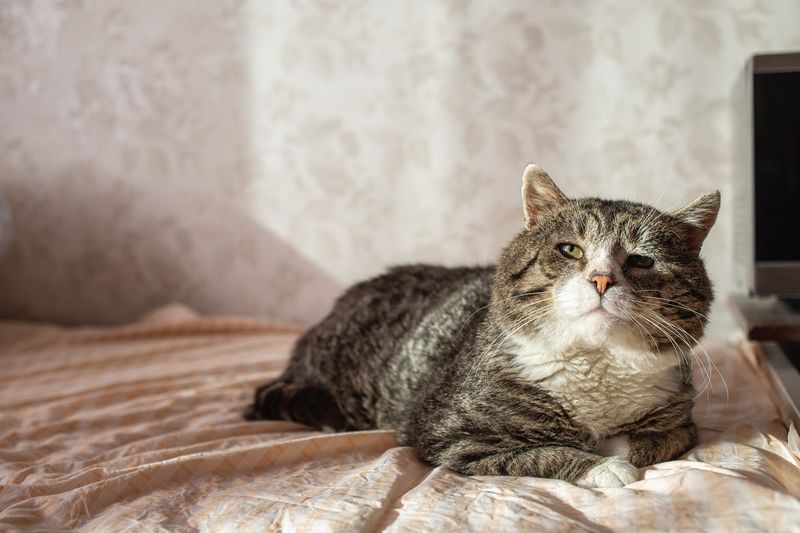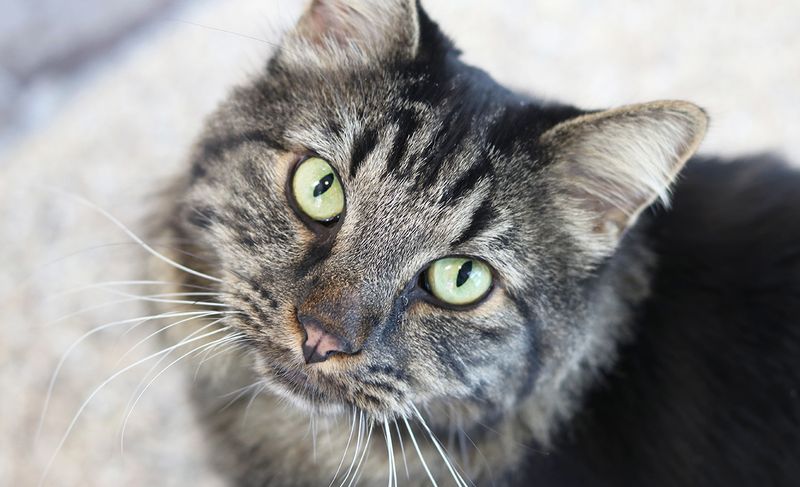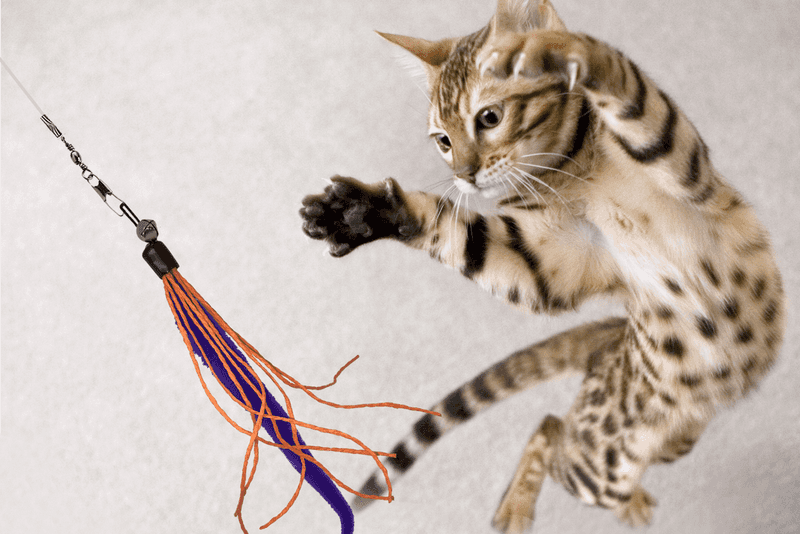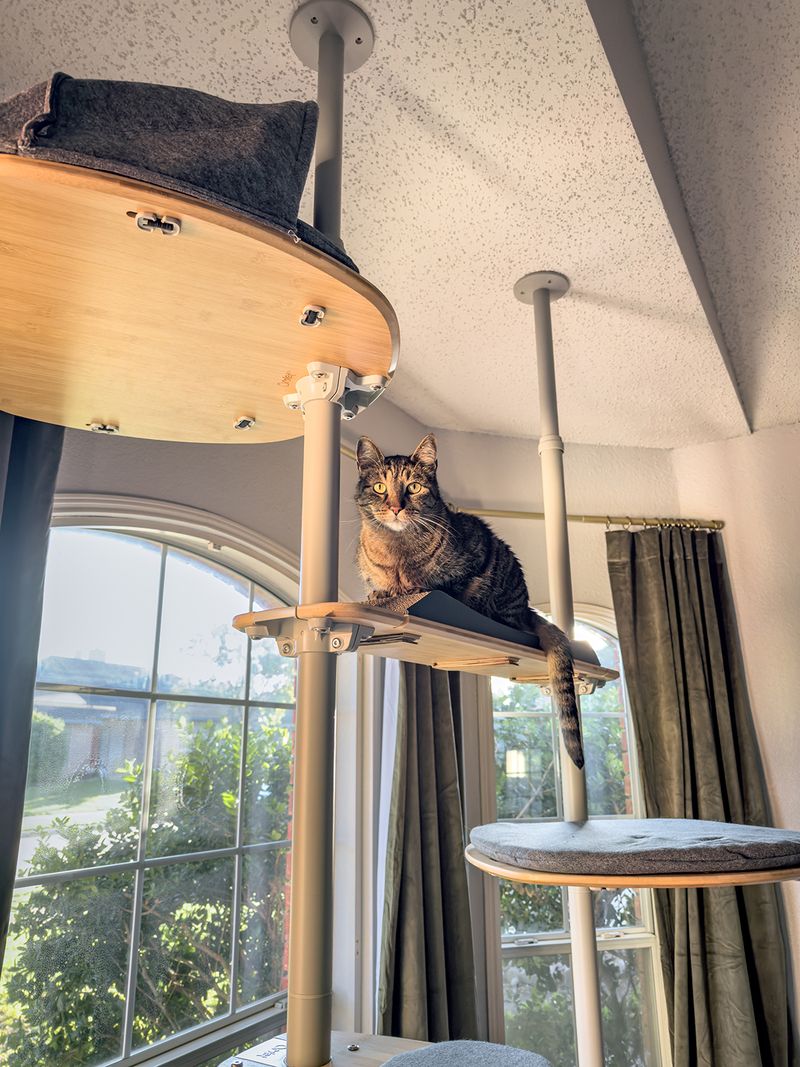📖 Table of Content:
- 1. Scratching Furniture
- 2. Jumping on Counters
- 3. Hiding Under Furniture
- 4. Nighttime Activity
- 5. Kneading Blankets and People
- 6. Bringing Home “Gifts”
- 7. Refusing to Use the Litter Box
- 8. Meowing for Attention
- 9. Knocking Items Off Surfaces
- 10. Not Coming When Called
- 11. Spraying or Marking
- 12. Aggressive Play
- 13. Climbing Curtains or Shelves
Cats have unique ways of communicating and interacting with their world. When we misinterpret these natural behaviors as problematic, we risk damaging our relationship with our feline friends. Understanding why cats do what they do helps us respond appropriately instead of punishing actions that are completely normal for them. Let’s explore behaviors that might seem frustrating but should never be corrected.
1. Scratching Furniture
Cats need to scratch! This natural behavior maintains claw health and marks territory through scent glands in their paws. When your cat scratches your couch, they’re not being destructive on purpose.
Rather than punishing this instinct, redirect it by providing appropriate scratching posts with different textures. Place these posts near the furniture they’ve targeted. Tall posts allow for full-body stretches cats love.
Regularly trim your cat’s claws and consider soft nail caps as humane alternatives to stopping damage. Remember that scratching is as necessary for cats as breathing – it’s not something they can simply stop doing.
2. Jumping on Counters
Climbing is second nature to cats, and counters offer the elevated view they crave. From this vantage point, they can explore their space and uncover things like food or a trickle of water.
Punishment creates fear but doesn’t address their need for elevation. Instead, create cat-friendly high spaces like window perches, cat trees, or shelves specifically for them. Keep counters clean and free of food temptations.
Some pet parents use deterrents like aluminum foil or double-sided tape on counters temporarily. These create uncomfortable surfaces without causing fear or pain, teaching cats to seek their designated perches instead.
3. Hiding Under Furniture
Small, enclosed spaces make cats feel secure and protected. When your cat retreats under the bed or sofa, they’re following their wild instincts to find safety. Forcing them out can increase anxiety and stress.
Cats need these safe spaces, especially during overwhelming situations like visitors, loud noises, or changes in routine. Respect their need for occasional solitude by allowing access to these hiding spots.
If your cat spends excessive time hiding, consider whether something in their environment feels threatening. Gradual socialization and creating multiple safe spaces throughout your home helps anxious cats feel more confident while honoring their natural security-seeking behavior.
4. Nighttime Activity
Midnight zoomies and 3 AM play sessions stem from cats’ natural nocturnal tendencies. Their ancestors hunted primarily at dawn and dusk, and this instinctual pattern remains in our domestic companions. Punishing nighttime activity contradicts their biological programming.
Active play before bedtime helps burn off excess energy. Try 15-20 minutes of interactive toys that simulate hunting to satisfy predatory instincts. Automatic feeders can distribute small meals throughout night hours, preventing hunger-based wake-ups.
Establish a consistent bedtime routine and ignore attention-seeking behaviors at night. Over time, many cats adjust somewhat to human schedules, but expecting complete nighttime inactivity is unrealistic for these crepuscular creatures.
5. Kneading Blankets and People
That rhythmic pushing of paws against soft surfaces dates back to kittenhood when cats stimulated milk flow from their mother. For adult cats, kneading indicates contentment, comfort, and security – it’s essentially a compliment!
The behavior releases calming endorphins for your cat and strengthens your bond. Some cats knead more intensely than others, sometimes with claws extended, which can become uncomfortable for humans.
Keep a thick blanket nearby to place between you and sharp claws during kneading sessions. Never punish this affectionate behavior – trim nails regularly instead or use soft nail caps if necessary. Your cat is showing you they feel safe and happy in your presence.
6. Bringing Home “Gifts”
Finding a dead mouse or bird on your doorstep might seem gruesome, but your cat is actually showing affection! This hunting behavior demonstrates their care for you – they’re contributing to the family by sharing their catch.
Outdoor cats follow natural predatory instincts, which help control rodent populations. Indoor cats may bring toy mice instead, displaying the same instinctual behavior. Either way, punishment creates confusion about a behavior deeply rooted in their nature.
For outdoor cats, consider a colorful collar with a bell to alert potential prey. Provide indoor cats with interactive toys that satisfy hunting drives. Thank your cat calmly for their gift – they’re showing love in the most authentic feline way possible.
7. Refusing to Use the Litter Box
Litter box avoidance isn’t rebellion – it’s communication. Cats naturally prefer clean, accessible toileting areas and typically avoid their litter box only when something is wrong. Medical issues like urinary tract infections often cause painful urination that cats associate with the box itself.
Environmental factors matter too. Boxes placed near noisy appliances, in high-traffic areas, or with litter textures cats dislike can trigger avoidance. Multiple-cat households need multiple boxes (ideally one per cat plus one extra) in different locations.
First, rule out health problems with a veterinary visit, then address environmental factors. Never punish – this increases stress and worsens the problem. Clean accidents thoroughly with enzymatic cleaners to remove scent markers that might encourage repeat incidents.
8. Meowing for Attention
Vocal communication is how cats talk to humans specifically – adult cats rarely meow at each other! Your chatty companion has learned that vocalizing gets your attention, whether for food, play, or affection.
Some breeds naturally vocalize more than others. Siamese and Oriental breeds are known for their conversational nature, while others might only speak up when truly necessary. Excessive meowing can indicate pain or illness, so always consider potential health causes first.
Respond to reasonable requests while ignoring excessive demands. Set regular feeding times instead of responding to food-related meows outside schedule. Provide environmental enrichment through toys, climbing spaces, and window views to reduce boredom-based vocalizations. Punishment only creates confusion about their attempt to communicate.
9. Knocking Items Off Surfaces
That glass of water deliberately pushed off the table? It’s not spite – it’s science! Cats are natural experimenters who learn about their world through touch and observation. They’re fascinated by gravity and enjoy watching objects fall.
This behavior also effectively gets your attention. Many cats discover that knocking things over creates an immediate human response – even negative attention is still attention from their perspective.
Secure valuable or dangerous items and provide appropriate toys that satisfy their need for movement and play. Interactive puzzle toys reward their curiosity without risking your belongings. Increase daily play sessions to burn energy and reduce boredom-based behaviors. Remember, your cat isn’t being malicious – they’re being a cat!
10. Not Coming When Called
Unlike dogs, cats aren’t naturally inclined to respond to their names or come when called. Their independent nature means they evaluate whether responding benefits them in that moment. This selective hearing isn’t disobedience – it’s just being a cat!
Cats respond better to positive reinforcement than punishment. Use treats, toys, or affection to create positive associations with coming when called. Practice in short, fun sessions without pressure or expectations.
Timing matters – calling during engaging activities like bird-watching or mid-nap rarely works. Most cats eventually learn to respond to their names, but maintain realistic expectations about their independent nature. Punishment for not coming creates negative associations that make future responses even less likely.
11. Spraying or Marking
Urine marking feels offensive to humans but serves important communication purposes for cats. Intact males commonly spray to advertise availability to females and mark territory. Females and neutered males may mark due to stress, anxiety, or perceived threats to their territory.
Multi-cat households often experience marking when social dynamics change. New pets, moving homes, or even seeing outdoor cats through windows can trigger this behavior. Medical issues like urinary tract problems can also cause inappropriate urination that resembles marking.
Spay/neuter pets early to prevent hormone-driven marking. Address environmental stressors and provide multiple resources in multi-cat homes. Consult your veterinarian about potential medical causes and behavior modification strategies. Punishment increases anxiety, potentially worsening the marking behavior.
12. Aggressive Play
Rough play with biting and scratching seems hostile but actually mimics how kittens learn hunting skills with siblings. Cats who left their litters too young often struggle with play intensity because they missed these crucial lessons in bite inhibition.
Human hands should never be play toys – this teaches cats that attacking hands is acceptable. Instead, redirect energy to appropriate toys like wand toys, which create distance between sharp teeth and your skin.
End play sessions immediately when aggression occurs by withdrawing attention. Consistent boundaries teach cats appropriate play over time. Never physically punish play aggression – this creates fear and can escalate the behavior. Remember that play is essential for physical and mental health, so focus on channeling it appropriately.
13. Climbing Curtains or Shelves
Cats are natural climbers who evolved to seek safety and hunting advantages from heights. Your curtains and bookshelves provide vertical territory that satisfies this powerful instinct. Young cats especially need these climbing opportunities for proper muscle development and confidence.
Punishment won’t eliminate the climbing need – it just creates anxiety. Instead, provide cat-friendly vertical spaces like sturdy cat trees, wall-mounted shelves, or window perches. Strategic placement near windows offers enrichment through outdoor viewing.
Secure bookcases to walls for safety and remove fragile items from climbing paths. Some cat parents install inexpensive shelving specifically for their cats, creating designated climbing zones. Meeting this natural need appropriately prevents damage while honoring your cat’s evolutionary programming.
